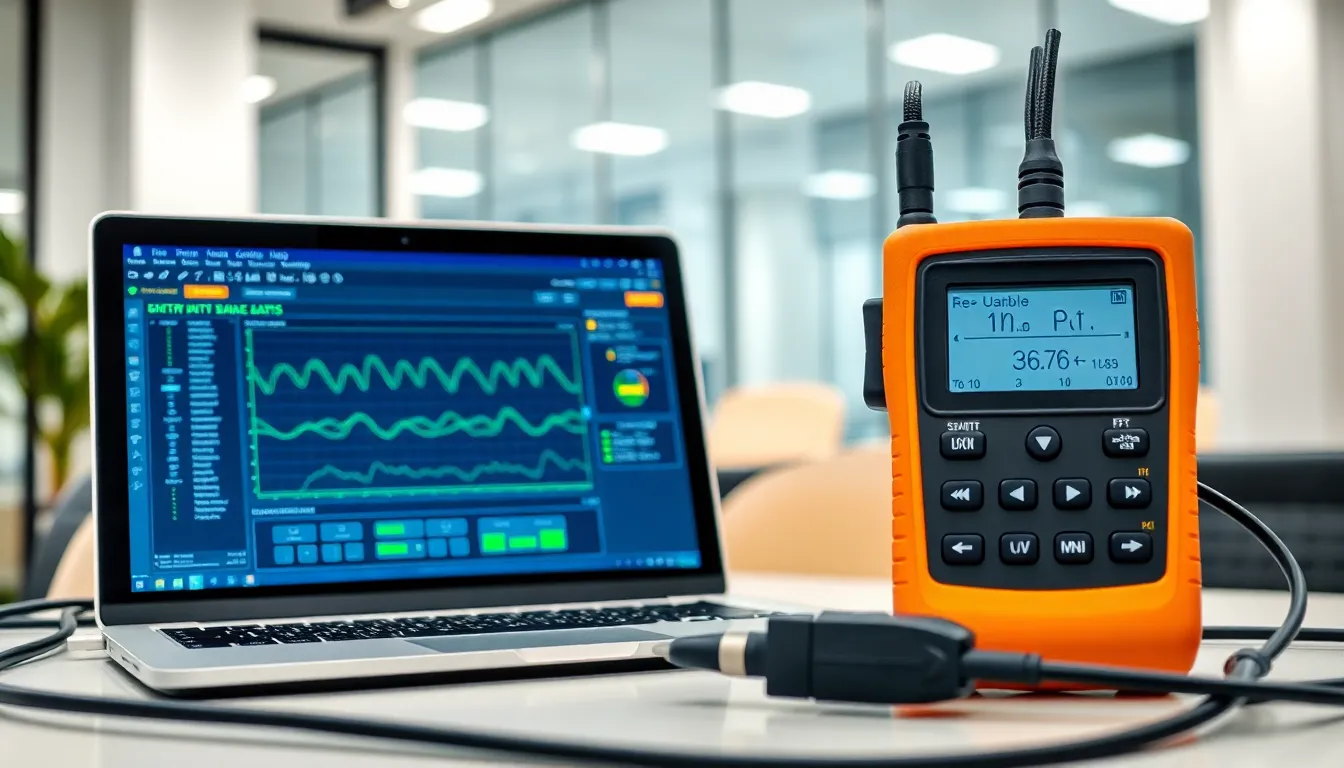In a world where Wi-Fi is as essential as coffee, network diagnostics can feel like the unsung hero of tech. Picture this: you’re streaming your favorite show, and suddenly it freezes. Panic sets in. But fear not! Network diagnostics swoops in like a superhero armed with tools to identify and fix those pesky connectivity issues.
Table of Contents
ToggleOverview of Network Diagnostics
Network diagnostics identify connectivity issues and optimize overall performance. This crucial process involves examining network components to ensure everything operates smoothly.
Definition of Network Diagnostics
Network diagnostics refer to the methods and tools used to evaluate the health of a network. These assessments include analyzing hardware, software, and configurations. By conducting these evaluations, technicians pinpoint specific problems affecting performance. Common tools for network diagnostics include ping, traceroute, and network analyzers. Each tool serves a distinct purpose, offering insights into various aspects of network functionality.
Importance of Network Diagnostics
Network diagnostics play a vital role in maintaining efficient connectivity. Identifying issues promptly minimizes downtime, reducing frustration for users. Enhanced performance results from finding and addressing potential problems swiftly. Organizations benefit from improved productivity when networks operate without interruptions. Regular diagnostics also support proactive management, helping to prevent future disruptions. Thus, implementing regular network checks safeguards seamless access to services and applications.
Common Network Diagnostics Tools

Network diagnostics tools play an essential role in evaluating and optimizing network performance. These tools range from software-based solutions to hardware devices, each designed to troubleshoot various network issues.
Software Solutions
Software solutions are widely used for network diagnostics. Ping tests measure the response time between two devices over a network, identifying delays or downtime. Traceroute assesses the path data takes to reach a destination and highlights points of failure, crucial for pinpointing connectivity issues. Network analyzers, such as Wireshark, capture and analyze data packets, offering insights into traffic patterns and potential bottlenecks. Other tools, including NetSpot and SolarWinds, facilitate comprehensive network monitoring, helping to identify weaknesses within the infrastructure.
Hardware Solutions
Hardware solutions also contribute significantly to network diagnostics. Routers often come equipped with built-in diagnostic tools that provide real-time performance metrics. Dedicated network monitoring devices can track traffic loads and alert users to abnormalities. Using handheld cable testers simplifies the identification of physical issues in wiring, ensuring optimal performance. Additionally, network interface cards (NICs) can have diagnostic features that help analyze link performance. Combining these hardware solutions with software options creates a thorough approach to diagnosing network issues.
Methods for Conducting Network Diagnostics
Network diagnostics employs various methods to identify issues and enhance performance. Utilizing specific tools and techniques improves network reliability and efficiency.
Ping and Traceroute
Ping functions by sending a request to a target IP address, measuring response time and packet loss for quick connectivity checks. It helps determine if a device is reachable over the network. Traceroute traces the pathway packets take to reach a destination, revealing each hop along the way. This tool identifies routing issues and delays, pinpointing where a problem may occur in the journey. Together, ping and traceroute serve as essential tools for diagnosing immediate connectivity concerns and understanding network paths.
Packet Analysis
Packet analysis dives deeper into network traffic, capturing data packets and examining their contents. Tools like Wireshark enable users to inspect protocols, identify anomalies, and assess overall traffic patterns. By examining packet headers and payloads, analysts can detect unauthorized access attempts or misconfigurations. Detailed insights assist in troubleshooting issues, optimizing performance, and ensuring secure communication across the network. Packet analysis remains a crucial method for maintaining network health and enhancing security measures.
Challenges in Network Diagnostics
Network diagnostics faces several challenges that can hinder effective troubleshooting and performance optimization. Identifying these challenges enables professionals to enhance their strategies for network maintenance.
Common Issues Faced
Network latency often disrupts user experience. Slow response times can stem from various factors, including congestion, faulty hardware, or configuration errors. Packet loss poses another significant problem, often resulting from network congestion or faulty networking equipment. These issues lead to interrupted connections and compromised performance. Moreover, misconfigured devices can create bottlenecks, exacerbating connectivity issues. Additionally, insufficient monitoring can prevent timely detection of these problems, resulting in prolonged downtime.
Solutions to Overcome Challenges
Utilizing advanced monitoring tools aids in identifying network issues proactively. Implementing real-time performance analytics allows for immediate adjustments to be made, minimizing downtime. Regularly updating firmware ensures devices operate efficiently, reducing the risk of malfunctions. Utilizing redundancy also helps in maintaining connectivity during failures. Training staff on network diagnostics practices fosters a proactive approach to issues as they arise. Conducting routine assessments of network infrastructure can help in pinpointing weaknesses before they escalate into significant problems.
Future Trends in Network Diagnostics
Emerging trends in network diagnostics are revolutionizing how organizations manage connectivity issues. Innovations such as machine learning and IoT devices offer unprecedented insights into network performance. Companies leverage automated diagnostic tools that provide real-time metrics, significantly reducing response times during troubleshooting. In addition, edge computing enhances the ability to process data locally, decreasing latency. This proactive approach allows for the detection of anomalies before they escalate into major problems.
The role of artificial intelligence in network diagnostics becomes increasingly vital. AI enhances data analysis capabilities, identifying patterns that human operators might miss. Through predictive analytics, AI can forecast potential failures and suggest optimal configurations. Several organizations implement AI-driven tools to automate routine diagnostics, which frees up IT resources for strategic initiatives. These advancements fundamentally change how businesses ensure network reliability, promoting a transition toward self-healing networks. Thus, organizations experience minimized downtime and improved overall performance.
Network diagnostics serve as a crucial element in ensuring seamless connectivity and optimal performance. By utilizing a mix of software and hardware tools, organizations can effectively identify and address issues before they escalate. The integration of advanced technologies such as AI and machine learning further enhances diagnostic capabilities, allowing for proactive management of network health.
Regular assessments and updates not only minimize downtime but also foster a more efficient operational environment. As networks continue to evolve, staying informed about emerging trends and tools will empower businesses to maintain robust connectivity and support their growth in an increasingly digital world.










